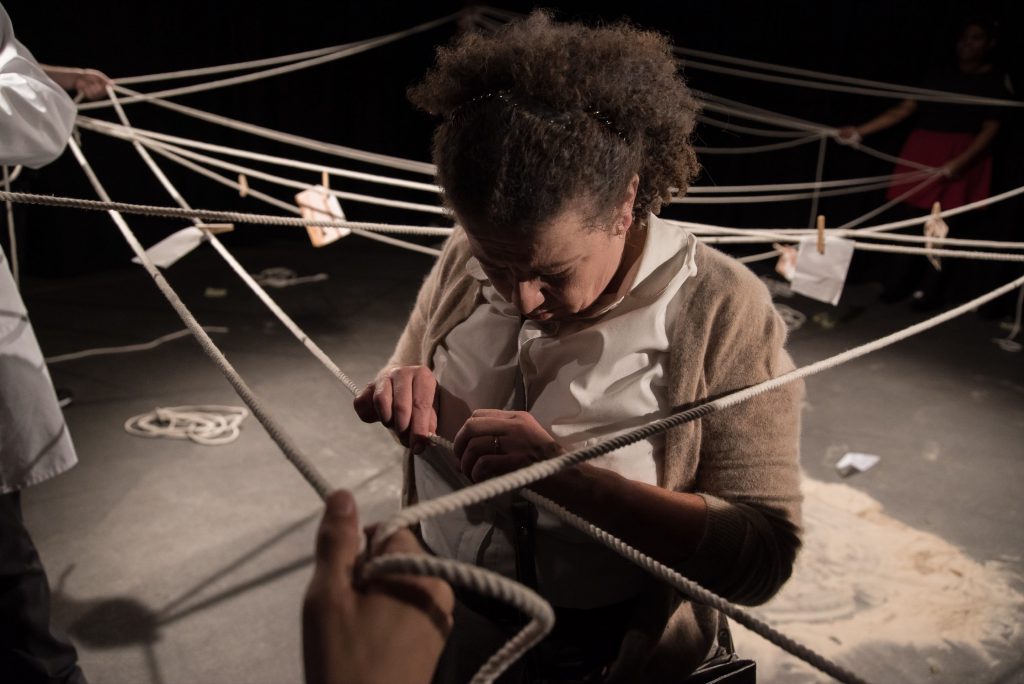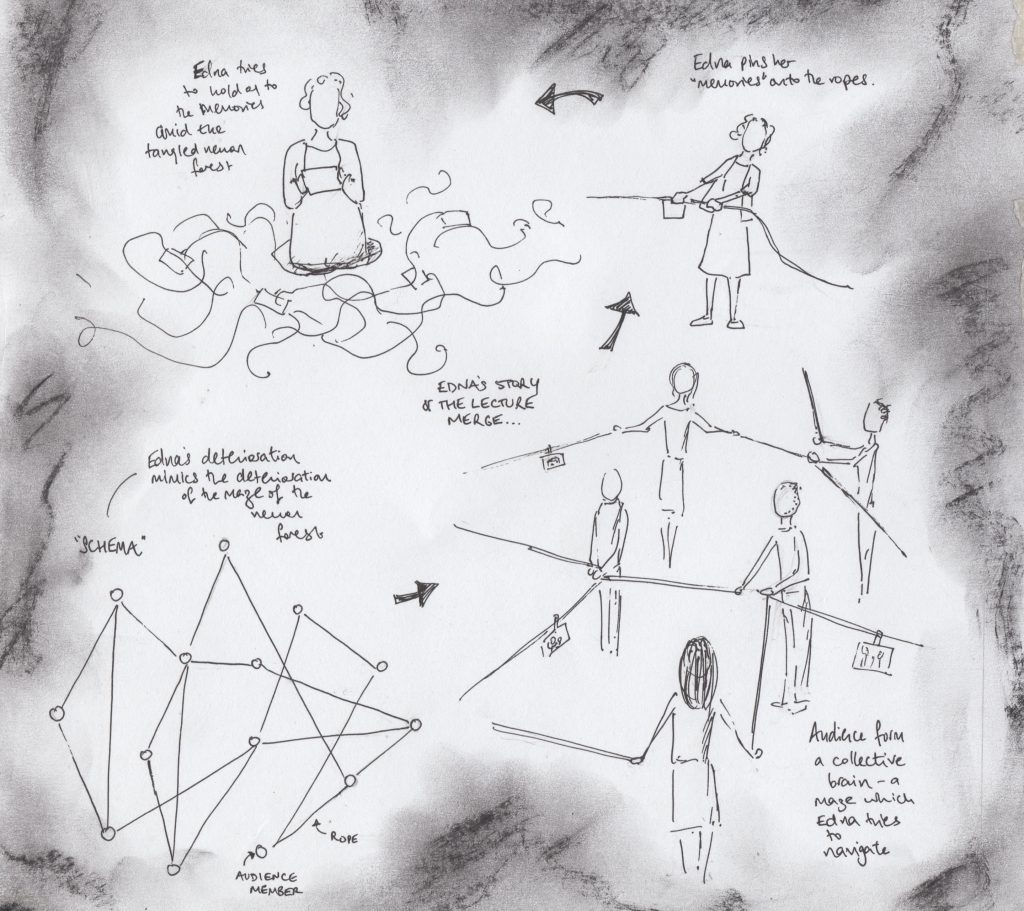Lost in The Neuron Forest
National tour 2014. Showcased at OISTAT World Stage Design, Cardiff 2013.
Developed in association with Wales Millennium Centre.
Director: Kate Lovell. Photography: Marcos Avlonitis, Film: Chiara Ambrosio

“ Lost in the Neuron Forest engages the audience’s sight, smell, haptics, and affection to create something that we respond to bodily… viscerally moving in a multimodal way… the feel of rope slipping through our hands and the smell of flowers piteously torn in forgetful distraction, let us in to the head of Edna, a lady with dementia.
Most powerfully, this production plays on the audience’s own kinaesthetic memories to get its point across. We are invited to hold taut a set of ropes, that represent neural pathways, naming a pet, a skill, a first crush as each rope (many hung with photographs) rises from the ground. Spanning the room, the ropes create ‘the neuron forest’ of a brain, our brain, Edna’s. As dementia encroaches on Edna’s mind, we are told to drop the ropes one by one. Feeling something physically slide from your grasp in this way is somehow deeply evocative of lack, physical loss. Calling up and playing upon all our personal embodied ideas of disconnection, our own cognitive associations of broken embraces, lost kites, runaway children tearing themselves from our handhold, it helps us to feel as Edna might.” – Laura Seymour, Exeunt
Lost in the Neuron Forest was devised following intensive discussions with scientists researching cognitive behavioural approaches to treating Alzheimer’s Disease. The central image of Edna in the neuron forest came from wanting our audience to feel what it might be like to experience memory loss, and to communicate the complexity of the human brain and what makes us who we are. It was a Bread & Goose production, created over a 2 year collaborative development period with scientists and fellow artists, and it invited the audience into the mind of Edna, a woman trying to make sense of herself amidst the tangled web created by her Alzheimer’s. Through an early experiment into participatory scenography, the space is co-built by the audience and their memories, so that Edna’s loss also becomes our own.





